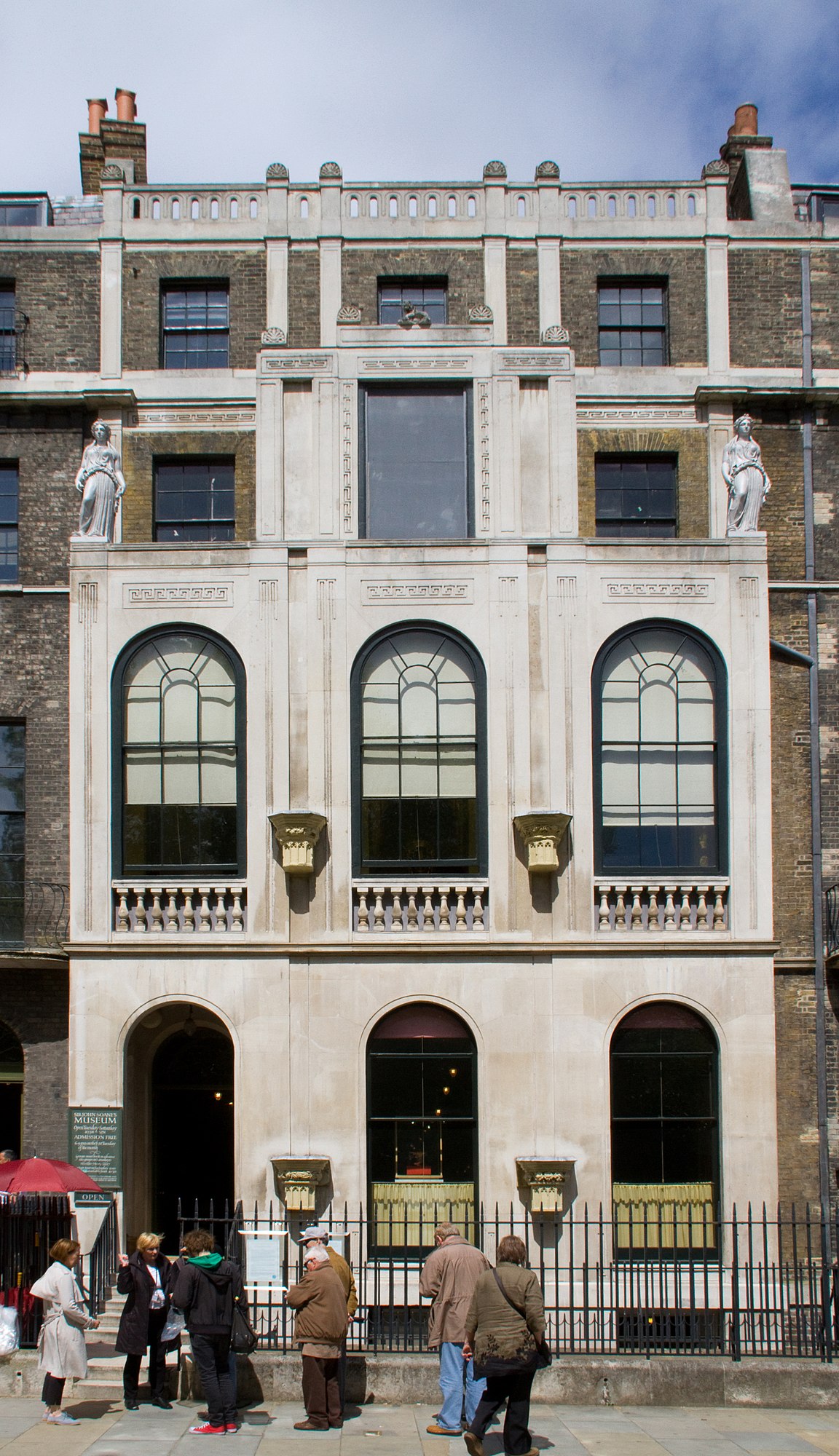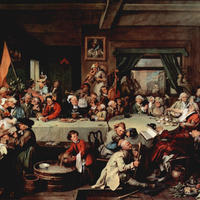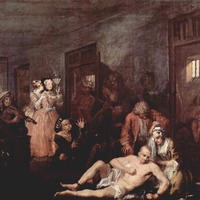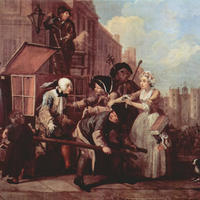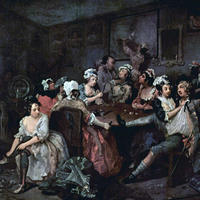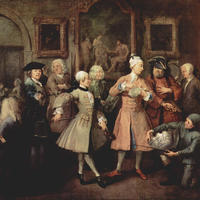More about Sir John Soane's Museum
Works at Sir John Soane's Museum

Contributor
Sir John Soane's Museum looks likethe residence of the Mad Hatter...or a serious hoarder.
Architect Sir Soane converted three posh, four-story houses into one out-of-this-world residence, and filled it up with art, architectural debris (literally) and lots of models. He used his home as an architectural lab and continually remodeled. The neighbors must have loved him something awful.
The museum has excellent paintings and sculptures, including brilliantly funny William Hogarth works and hyper-realistic scenes of Venice by Giovanni Antonio Canaletto. It also has a mummified cat, a collection of clocks and barometers, and a model of the Bank of England building he designed. And if you are really into architecture, there 8,044 of Soane’s drawings, and another 20,000 by other architects.
As you'd expect from an architect, the building steals the show. It is full of unexpected details, nooks and crannies filled up with objects such as pieces of Greek and Roman sculptures and architectural and building fragments. A journalist for the newspaper The Telegraph writes that the residence/museum is, "a delightful rabbit warren of a place, with interlocking rooms on different levels crammed from floor to ceiling," and that Soane must have had "a horror of an empty space."
Soane was an eccentric, to be sure. He's been described as, "a genius, irascible, a control-freak, litigious and generally short on laughs." But he gave us this great museum, and also the iconic red telephone box! The mausoleum he built for himself inspired the red British structure.
The house has acquired a dedicated following, too. It has fascinated and inspired artists like Antony Gormley and Damien Hirst, as well as the brilliant Grayson Perry. Monty Python’s Michael Palin and the UK’s most loved comedian Stephen Fry are avid fans. The museum is small, so thankfully only 80 visitors are allowed in at a time. You may have to wait outside to enter the building if its museum-rush hour, but inside you get quality time.
The park across from Sir Sloane’s, Lincoln's Inn Fields, has grassy fields surrounded by ancient towering oaks and is perfect for a midday lie-down or lunch, excepting rainy days of course. The park has been an open area since at least the 12th century and for a while was popular among duelists. Lord William Russell, son of the First Duke of Bedford, was beheaded there in 1683, because he and a few buddies conspired to assassinate King Charles II. The executioner apparently wasn’t very skilled and it took four axe blows before the head rolled off.
Featured Content
Here is what Wikipedia says about Sir John Soane's Museum
Sir John Soane's Museum is a house museum, located next to Lincoln's Inn Fields in Holborn, London, which was formerly the home of neo-classical architect John Soane. It holds many drawings and architectural models of Soane's projects and a large collection of paintings, sculptures, drawings, and antiquities that he acquired over many years. The museum was established during Soane's lifetime by a private act of Parliament, Sir John Soane's Museum Act 1833 (3 & 4 Will. 4. c. 4 Pr.), which took effect on his death in 1837. Soane engaged in this lengthy parliamentary campaign in order to disinherit his son, whom he disliked intensely. The act stipulated that on Soane's death, his house and collections would pass into the care of a board of trustees acting on behalf of the nation, and that they would be preserved as nearly as possible exactly in the state they were at his death. The museum's trustees remained completely independent, relying only on Soane's original endowment, until 1947. Since then, the museum has received an annual Grant-in-Aid from the British Government via the Department for Culture, Media and Sport. Only 90 visitors are allowed in the museum at a time.
From 1988 onwards, a programme of restoration was carried out, with spaces such as the drawing rooms, picture room, study and dressing room, picture room recess and others, restored to their original colour schemes and in most cases having their original sequences of objects reinstated. Soane's three courtyards were also restored with his pasticcio (a column of architectural fragments) being reinstated in the monument court at the heart of the museum. In 1997, the trustees purchased the main house at No. 14 with the help of the Heritage Lottery Fund. The house was restored and has enabled the museum to expand its educational activities, to re-locate its research library, and create a Robert Adam Study Centre where Soane's collection of 9,000 Robert Adam drawings is housed.
Soane's collection of paintings includes works by Canaletto, Hogarth, three works by his friend J. M. W. Turner, Thomas Lawrence, Antoine Watteau, Joshua Reynolds, Augustus Wall Callcott, Henry Fuseli, William Hamilton and 15 drawings by Giovanni Battista Piranesi, many of which are framed and displayed in the museum. There are over 30,000 architectural drawings in the collection, along with various Egyptian, Greek and Roman antiquities, including the Sarcophagus of Seti I.
The Soane Medal, established in 2017, is an international award presented annually by the Museum.
Check out the full Wikipedia article about Sir John Soane's Museum

